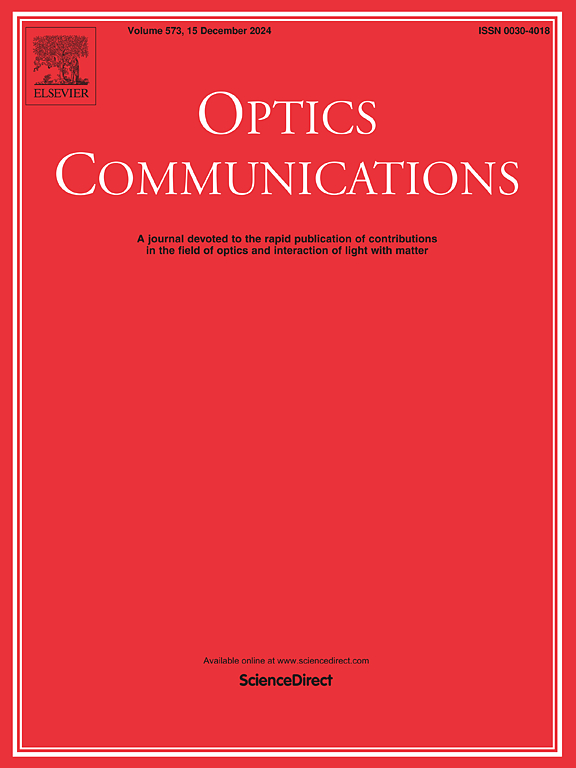Effect of roughness on object identification using OAM spectrum
IF 2.2
3区 物理与天体物理
Q2 OPTICS
引用次数: 0
Abstract
LiDAR detection is very sensitive to the surface roughness of objects, which will affect the detection and identification results of the objects. The orbital angular momentum (OAM) spectrum can also be used with LiDAR to detect objects, but there are currently no research papers analyzing the impact of roughness in this scenario. In this study, a roughness model and a projection measurement method were used for numerical simulation. The analysis showed that when the wavelength is , and the correlation length is 1 mm, roughness does not affect the rotational symmetry of objects identified the OAM spectrum. When the correlation length is 5 mm and 10 mm, and the root mean square of the surface roughness is , the roughness does not affect the determination of the rotational symmetry of the target. Experimentally, this study built an optical architecture for detecting the symmetry of objects using OAM spectra. Using a 532 nm laser, the study measured five-leaf clover objects with four different roughness levels (320 mesh, 600 mesh, 2000 mesh, and 10,000 mesh). The experimental results show that using OAM spectra to detect the rotational symmetry of objects is insensitive to surface roughness, which is consistent with the simulation results. This study can promote the further application of orbital angular momentum in LiDAR target recognition.
求助全文
约1分钟内获得全文
求助全文
来源期刊

Optics Communications
物理-光学
CiteScore
5.10
自引率
8.30%
发文量
681
审稿时长
38 days
期刊介绍:
Optics Communications invites original and timely contributions containing new results in various fields of optics and photonics. The journal considers theoretical and experimental research in areas ranging from the fundamental properties of light to technological applications. Topics covered include classical and quantum optics, optical physics and light-matter interactions, lasers, imaging, guided-wave optics and optical information processing. Manuscripts should offer clear evidence of novelty and significance. Papers concentrating on mathematical and computational issues, with limited connection to optics, are not suitable for publication in the Journal. Similarly, small technical advances, or papers concerned only with engineering applications or issues of materials science fall outside the journal scope.
 求助内容:
求助内容: 应助结果提醒方式:
应助结果提醒方式:


